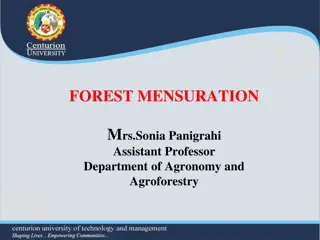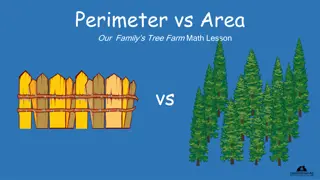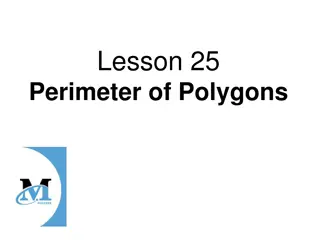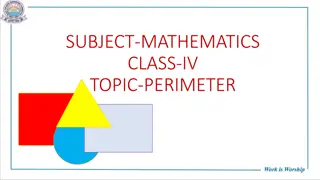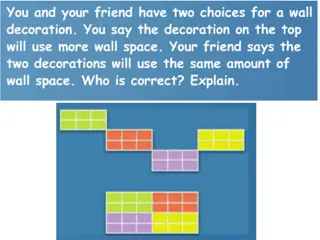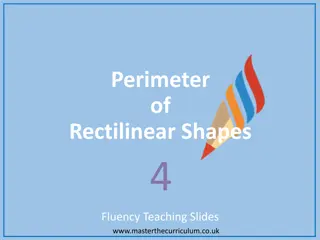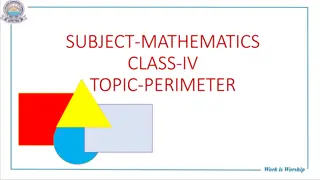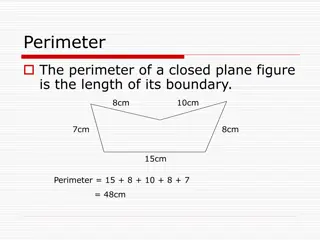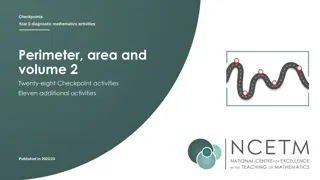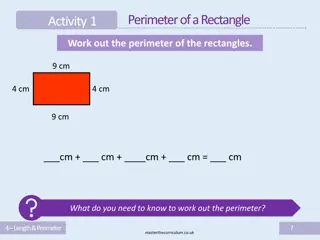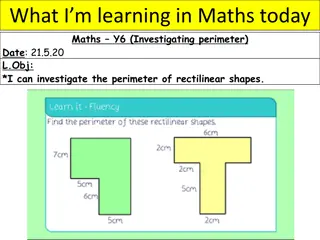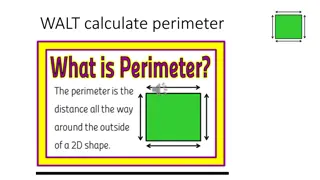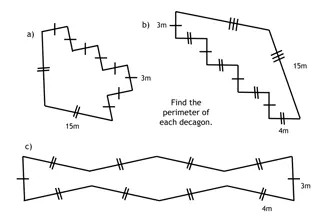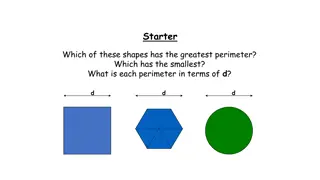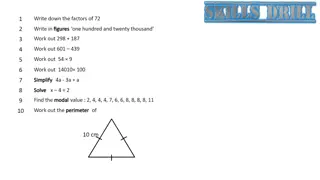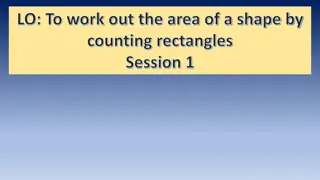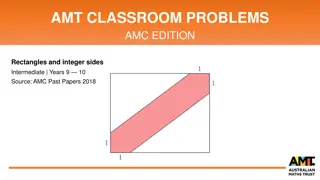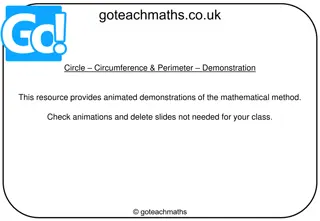Exploring Perimeter, Area, and Mensuration in Mathematics
In this educational module, we delve into the concepts of perimeter and area of closed plane figures like triangles, rectangles, circles, and quadrilaterals. We also discuss surface area and solve problems related to these geometric concepts. Through examples and visuals, students learn how to calculate the area of various shapes, including trapeziums, and apply this knowledge to real-world scenarios like determining the amount of land fenced or covered by grass in a park.
Download Presentation

Please find below an Image/Link to download the presentation.
The content on the website is provided AS IS for your information and personal use only. It may not be sold, licensed, or shared on other websites without obtaining consent from the author. Download presentation by click this link. If you encounter any issues during the download, it is possible that the publisher has removed the file from their server.
E N D
Presentation Transcript
ATOMIC ENERGY EDUCATION SOCIETY CLASS:VIII MATHEMATICS 11.Mensuration(Module 1/3) -Chitrank Jwala AECS 4 RBT
Introduction We have learnt that for a closed plane figure, the perimeter is the distance around its boundary and its area is the region covered by it. We found the area and perimeter of various plane figures such as triangles, rectangles, circles etc. We have also learnt to find the area of pathways or borders in rectangular shapes. In this chapter, we will try to solve problems related to perimeter and area of other plane closed figures like quadrilaterals. We will also learn about surface area and
Let us Recall Let us take an example to review our previous knowledge.This is a figure of a rectangular park (Fig 11.1) whose length is 30 m and width is 20 m. (i) What is the total length of the fence surrounding it? To find the length of the fence we need to find the perimeter of this park, which is 100 m. (ii) How much land is occupied by the park?
Area of cemented path = Area of park Area of park not cemented. Path is 1 m wide, so the rectangular area not cemented is (30 2) (20 2) m2 . That is 28 18 m2 .Hence number of cement bags used = ------------------ (iv) There are two rectangular flower beds of size 1.5 m 2 m each in the park as shown in the diagram (Fig 11.1) and the rest has grass on it. Find the area covered by grass. Area of rectangular beds = ------------------ Area of park left after cementing the path = ------------------ Area covered by the grass = ------------------ We can find areas of geometrical shapes other than rectangles also if certain measurements are given to us . Try to recall and match the following:
Area of Trapezium Nazma owns a plot near a main road (Fig 11.2). Unlike some other rectangular plots in her neighbourhood, the plot has only one pair of parallel opposite sides. So, it is nearly a trapezium in shape. Can you find out its area? Let us name the vertices of this plot as shown in Fig 11.3. By drawing EC || AB, we can divide it
So to find the area of a trapezium we need to know the length of the parallel sides and the perpendicular distance between these two parallel sides. Half the product of the sum of the lengths of parallel sides and the perpendicular distance between them gives the area of trapezium.


